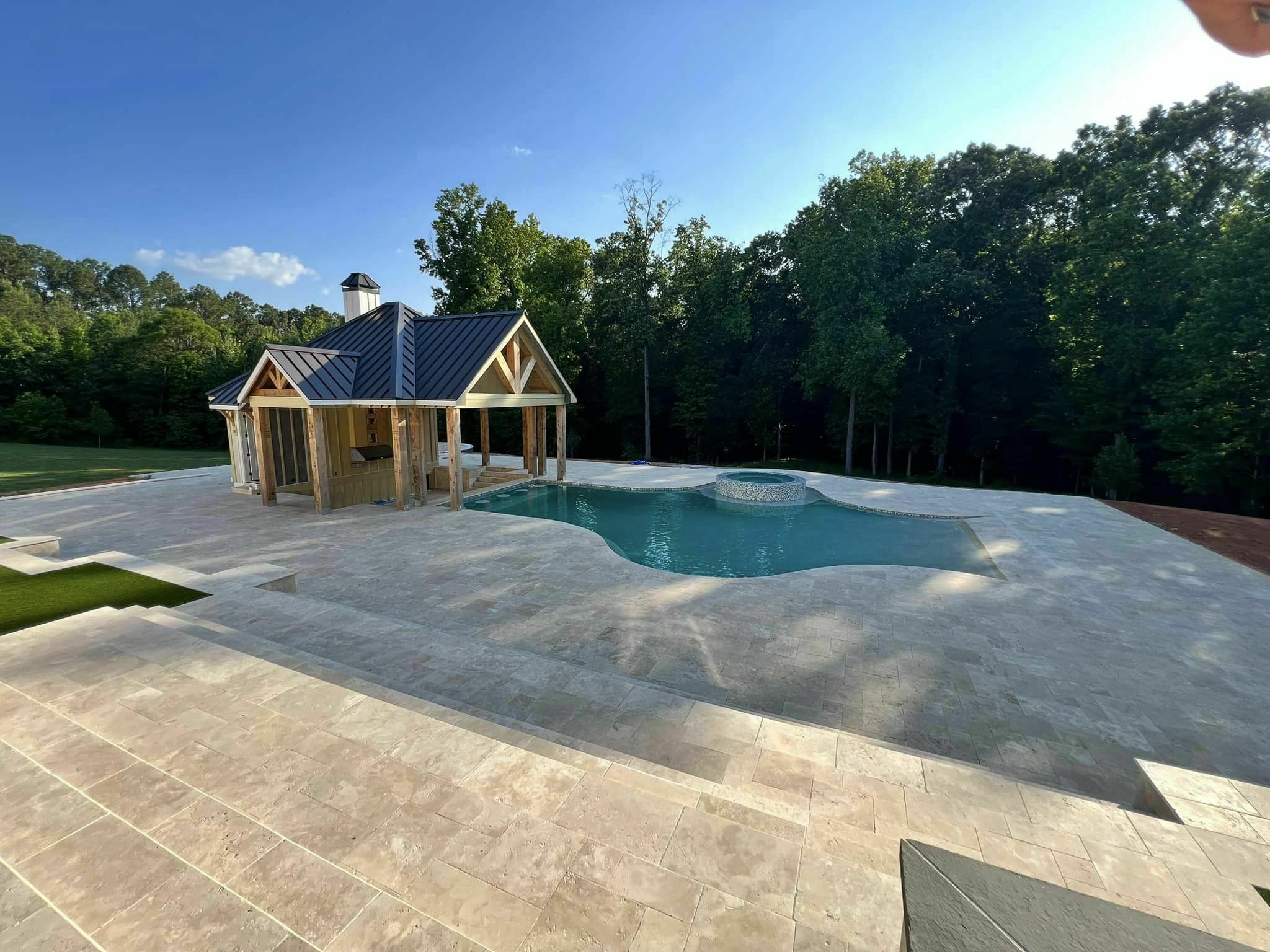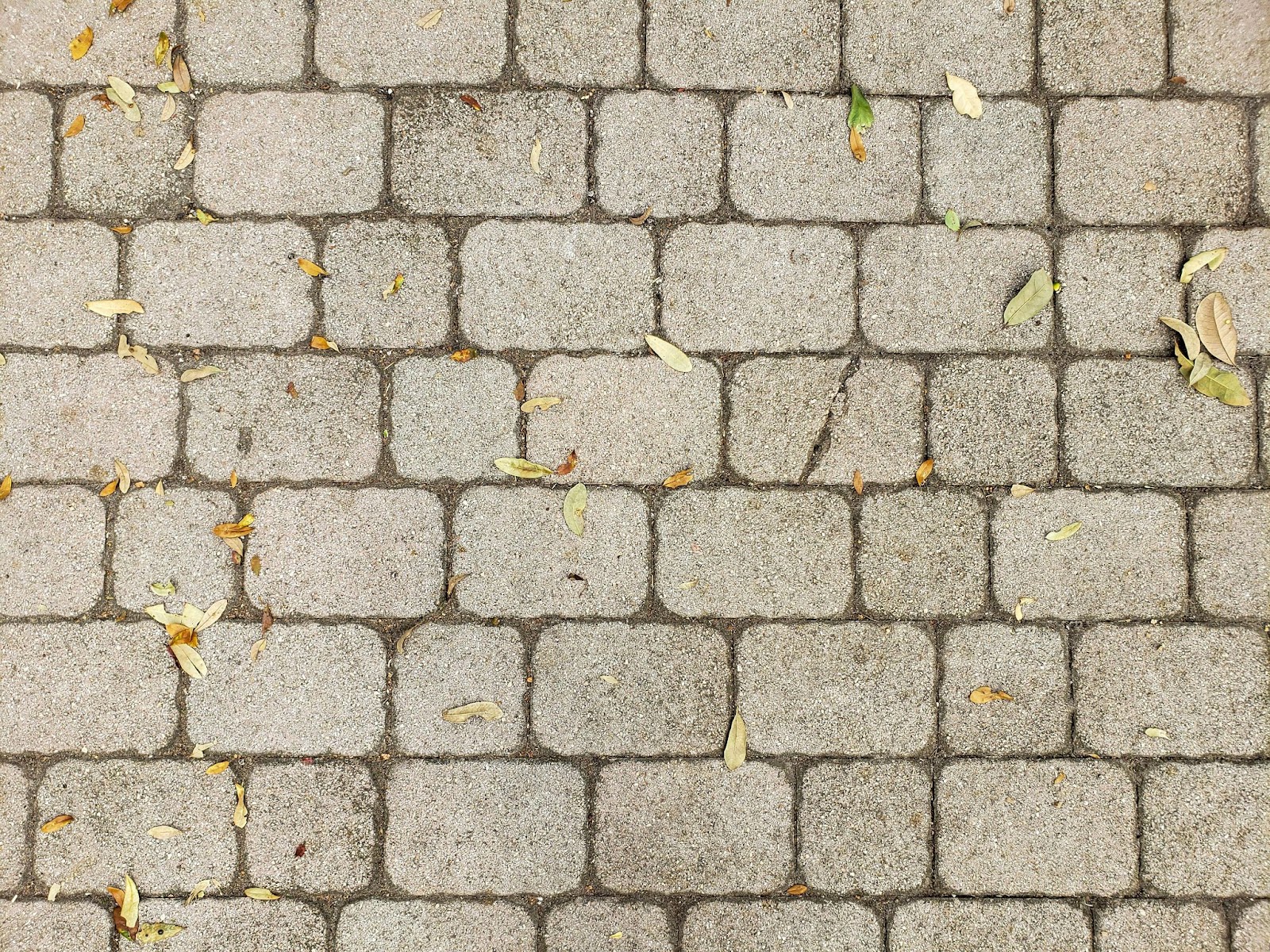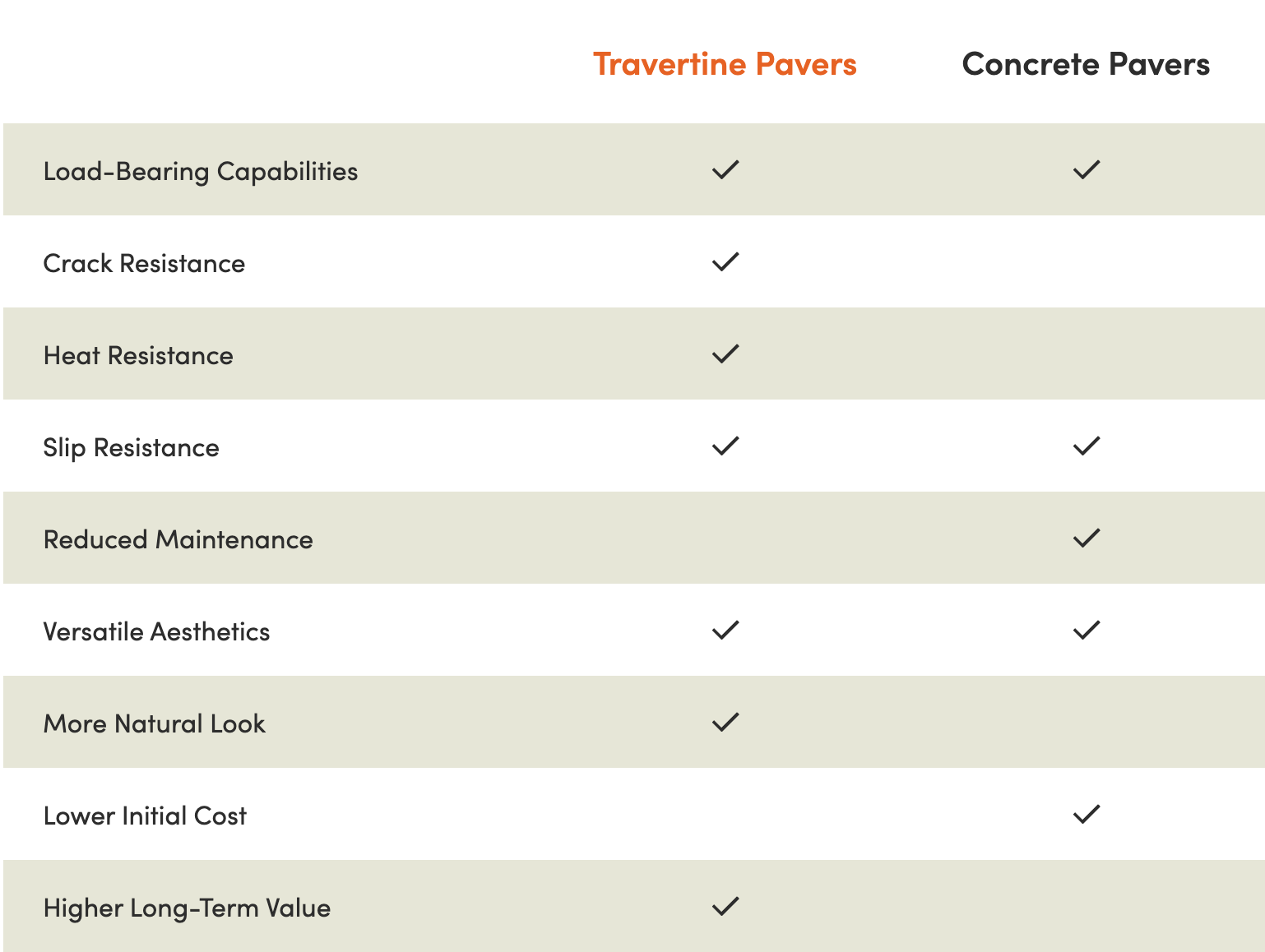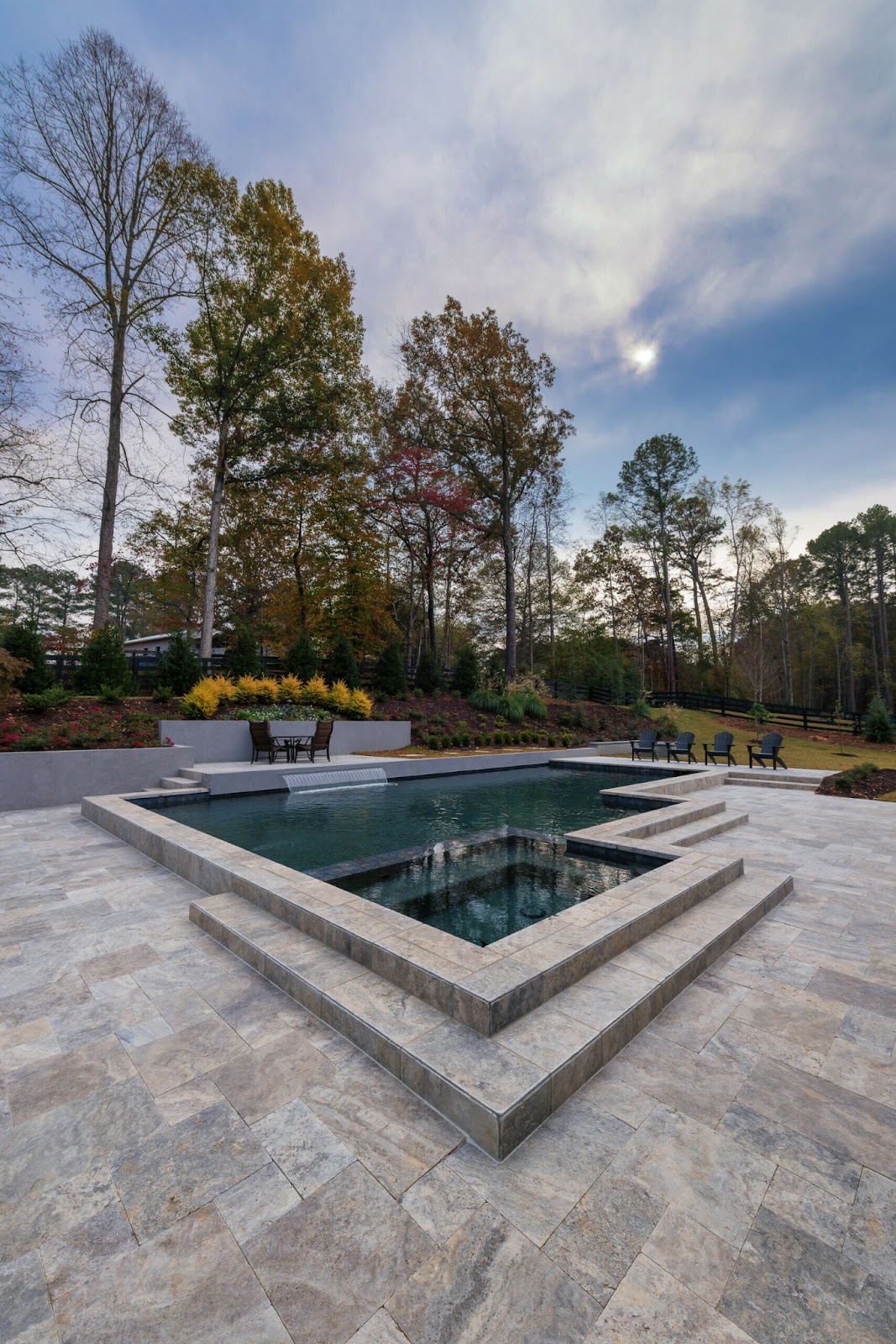Travertine Paver vs. Concrete: Which Is Better for Your Outdoor Space?

Choosing the right material for your outdoor pavers can be a challenging task. While concrete is a popular construction material, many professionals are now opting for travertine pavers due to their versatility, visual appeal and other desirable features.
By understanding the differences between concrete and travertine, you can assess what might be the best choice for your patio, walkway, pool deck or other outdoor surfaces.
Overview of Travertine Pavers
Formed from calcium carbonate and fresh water, travertine is a naturally occurring sedimentary limestone that’s usually found around mineral springs.
Travertine has been a popular building material in parts of the world, like Italy, for a long time. Now, it is becoming increasingly popular elsewhere with good reason.
Travertine pavers are known to be durable, cool to the touch and resistant to changing despite harsh weather conditions. They’re often installed over surfaces such as sand and gravel, with a layer of mortar in between.
Common Outdoor Uses
Like other types of pavers, travertine pavers are used to create patios, decks and walkways.
However, the properties of travertine make it particularly great for specific purposes. For example, textured travertine’s non-slip properties make it highly suited for pool sides. It also retains less heat than concrete, which makes for a cooler surface during those hot summer months.
Aesthetic Qualities
In its natural state, travertine has a light beige to gray color and tends to have irregular patches and patterns. This makes each piece of travertine unique, which is ideal for creating a natural look in an outdoor space.
Natural stones like travertine also age well. In fact, they can become richer in tone as years pass, while some man-made materials like concrete can simply fade over time.
Overview of Concrete Paving

Concrete is an engineered mix of aggregates such as rock, sand and gravel, with a binder (typically cement) and water. This blend forms a smooth, solid structure that can resemble natural rock or stone.
Concrete can be molded into various shapes, making it highly versatile for a range of applications. It’s also very strong and able to resist tension, stress and compression, making it a popular choice for driveway applications.
Types of Concrete Paving
Although concrete pavers can come in a wide variety of shapes, there are two main categories: interlocking pavers and architectural slab pavers. The main difference between the two is their surface area and intended use.
Interlocking pavers are thick blocks (often brick-shaped), usually found in driveways or anywhere durability takes priority. Because these pavers have a generally smaller surface area compared to a slab, they are stronger and can withstand heavier loads from vehicles.
Thinner architectural slab pavers are more typically used for areas with only pedestrian traffic, like a backyard patio. Slabs are bigger pavers that have a larger surface area, so if a vehicle drives over them, they may be more easily cracked.
Flexibility in Design and Finishing Options
Concrete pavers vary widely in shape, texture and color. Concrete can mimic the look of stone, brick and other materials. This means you can benefit from the convenience and advantages of concrete while retaining the look of more natural materials.
Travertine vs. Concrete: A Comparison

Because there are advantages and drawbacks to both travertine and concrete pavers, choosing the best option for your next project can be tricky.
Comparing the materials side-by-side makes it easier to see their key differences, helping ensure you make the right decision for design success.
Appearance and Style Options
Travertine comes in natural variations of tone and color. You also have many options when it comes to cutting, finishing and arranging the travertine pavers:
- A tumbled finish: Cut tiles are placed into a machine with rocks and rotated, rounding the edges of the tiles and adding texture.
- A honed finish: Travertine is ground down on one side to create a smooth finish.
- A polished finish: Holes in the travertine are filled in to create a similar smooth effect.
Concrete pavers, while also offering various colors and textures, tend to lack the natural beauty and unique variations of travertine.
Durability and Performance Over Time
Like other types of natural stone, travertine is resistant to erosion, cracks and chipping. It’s also naturally strong and able to withstand heavy loads and weather, making it suited to patios and walkways.
Concrete is known for its high load-bearing capacity, especially when it’s reinforced. However, it can be more prone to cracking and chipping than pavers made of natural stone.
Heat Retention and Surface Comfort
One major advantage of travertine pavers is their ability to remain cool even on very hot days. Compared to concrete, travertine does not retain much heat, making it comfortable to walk on even when exposed to direct sunlight.
Slip Resistance and Safety in Wet Areas
Compared to polished travertine, concrete can offer greater slip resistance in wet areas, especially when finished with a textured surface or treated with slip-resistant coatings.
However, tumbled travertine provides more grip, as does travertine with added surface treatments and sealers.
Cost Differences, Including Installation and Maintenance
Travertine usually has a higher upfront cost than concrete as it must be extracted, transported and cut.
However, travertine can be a better long-term investment as natural stone can increase property value with its attractive aesthetic.
Overall Maintenance Needs and Long-Term Care
Travertine pavers need to be sealed occasionally to maintain durability and stain-resistance. Additionally, routine cleaning is recommended to maintain the pavers’ charm.On the other hand, concrete pavers are slightly lower maintenance, as they only need occasional cleaning and rarely require resealing.
In Review: What Paver Type is Best For Your Project?
To summarize the key points, here’s a chart to clearly show how the two paver types compare when it comes to essential design aspects.

Choose Markham for Travertine Pavers and More

Ultimately, there’s no single best option for every project. Both concrete and travertine have their advantages, and the differences mostly come down to personal preference and the specific goals of the project.
If you’ve decided that travertine tile is the solution for your landscaping project, our team at Markham can supply you with the highest quality materials on the market. We stock a variety of outdoor travertine tile, as well as many other construction and landscaping products, so you can be sure to find the right pavers for your design.
To find out how our offerings can help you bring your outdoor construction and landscaping projects to life, contact our team today or visit one of our locations.


Get Your Free Quote Today
Transform your outdoor space with our expert materials.





